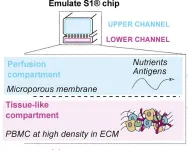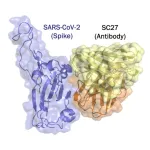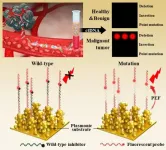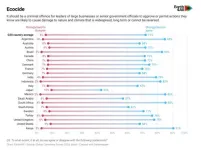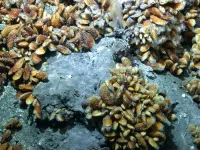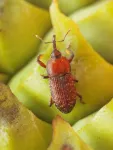New research from Swansea University shines a light on how solar power and farming can coexist
2024-09-06
(Press-News.org)
Scientists from Swansea University have developed a new tool to help identify optimal photovoltaic (PV) materials capable of maximising crop growth while generating solar power.
In a recent study published in Solar RRL, academics from the University’s Department of Physics have been exploring the effect of semi-transparent PV materials placed over crops – an exemplary application of agrivoltaics (solar panels combined with agricultural settings).
As part of this work, the team has developed an innovative freeware tool that predicts the light transmission, absorption, and power generation of different PV materials nearly anywhere on the globe using geographical, physical, and electrical measurements.
Austin Kay, lead author of the study and a PhD candidate at Swansea University, said: “This technology, which allows us to compare many types of PV material, could help us determine how we balance food production and renewable energy generation.”
A key factor for optimising agrivoltaics is selecting the appropriate PV material, which requires an understanding of how the material absorbs different wavelengths (colours) of light, as well as its bandgap. A wider bandgap means the material can absorb light that is higher-energy and has a shorter wavelength (blue), while a narrower bandgap allows the absorption of lower-energy, longer wavelength (red) light.
By carefully selecting PV materials with specific bandgaps and absorption properties, researchers can fine-tune the ‘colour’ of light transmitted through semi-transparent PVs to hit the crops, which mainly absorb red and blue light to photosynthesise, reflecting green light.
Project lead, Associate Professor Ardalan Armin, said: “By optimising the combination of solar panels and agriculture, agrivoltaics has the potential to significantly contribute to the decarbonisation of the agricultural sector. This approach not only generates clean energy but also enhances food security.”
Solar panels or PVs can be introduced into agricultural settings in many ways to provide locally generated power with minimal effect on a farm’s output. They can be attached to the roofs of greenhouses or polytunnels and can also be used to provide shelter for livestock. In return, the livestock can reduce maintenance costs by eating vegetation around the panels. However, careful consideration of the type of livestock is crucial as some species, like goats, can jump onto the PVs and cause irreversible damage.
Read the paper On the Performance Limits of Agrivoltaics—From Thermodynamic to Geo-Meteorological Considerations in full.
END
[Attachments] See images for this press release:
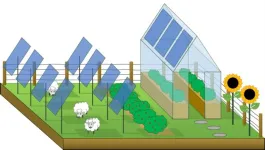
ELSE PRESS RELEASES FROM THIS DATE:
2024-09-06
Researchers at the Institut Pasteur in France have developed artificial “lymphoid organ-chips” that recreate much of the human immune system’s response to booster vaccines. The technology, described in an article to be published September 6 in the Journal of Experimental Medicine (JEM), could potentially be used to evaluate the likely effectiveness of new protein and mRNA-based booster vaccines for COVID-19 and other infectious diseases.
The rapid mutation and evolution of SARS-CoV-2 and other viruses ...
2024-09-06
SAN ANTONIO -- A monoclonal antibody appears effective at neutralizing the numerous variants of SARS-CoV-2, as well as related viruses in animals that could pose a threat if they were to begin spreading in people. The antibody, called SC27, was recently described in Cell Reports Medicine.
The finding opens the possibility of broader, more effective treatments to work against current and future COVID variants.
Monoclonal antibody SC27 was identified, developed and provisionally patented by a team of researchers led ...
2024-09-06
Every cell in our body contains the same DNA, yet liver cells are different from brain cells, and skin cells differ from muscle cells. What determines these differences? It all comes down to gene regulation; essentially how and when genes are turned on and off to meet the cell’s demands. But gene regulation is quite complex, especially because it is itself regulated by other parts of DNA.
Gene regulators: Enhancers, transcription factors
There are two important components that control gene regulation: the first are enhancers, which are short bits of DNA that increase the likelihood that a ...
2024-09-06
Dr. Min-young Lee and Dr. Sung-gyu Park of the Advanced Bio and Healthcare Materials Research Division at KIMS have developed a technology that can detect cancer mutant genes in blood with the world's highest sensitivity of 0.000000001% based on plasmonic nanomaterials for optical signal amplification. The team tested blood samples from lung cancer patients (stages 1-4) and healthy individuals for EGFR mutations and achieved a diagnostic accuracy of 96%.
Previously utilized genetic analysis technologies had low analytical sensitivity to detect mutated genes compared to normal genes, making it difficult to accurately diagnose early-stage cancer patients. ...
2024-09-06
COLUMBUS, Ohio – Severe drought in the American Southwest and Mexico and more severe wet years in the Northeast are the modern norm in North America, according to new research – and the analysis suggests these seasonal patterns will be more extreme in the future.
The middle of the United States, meanwhile, can expect bigger swings between wetter wet periods – high-rainfall years known as pluvials – and drier summers through the rest of this century, the study predicts.
Researchers at The Ohio State University say the findings, based on modern precipitation data, historical tree rings and climate models ...
2024-09-06
The medical field is inherently susceptible to errors, with laboratory tests being no exception. In histopathology laboratories, where tests are considered the gold standard for diagnosing various diseases, errors can significantly impact patient outcomes. Quality Control (QC) and Quality Assurance (QA) programs are essential in minimizing these errors and ensuring the generation of accurate and reliable reports. The complex, multistep nature of histopathology work, combined with the subjective nature of many diagnostic interpretations, ...
2024-09-06
Nearly three out of four people (72%) surveyed across 18 G20 countries1 support making it a criminal offence for government or leaders of large businesses to approve or permit actions which cause serious damage to nature and climate, finds major new research. This finding is part of the latest Global Commons Survey 2024, conducted by Ipsos UK and commissioned by Earth4All and the Global Commons Alliance (GCA).
The research follows recent landmark legislative changes, including in Belgium where ecocide was recognised as a federal crime earlier this year. Related laws ...
2024-09-06
Newborn babies have one of three pioneer bacteria in their gut shortly after birth, one of which could be used to develop new personalised infant therapeutic probiotics, researchers show.
In the largest study of UK baby microbiomes to date, researchers from the Wellcome Sanger Institute, University College London (UCL), and the University of Birmingham, used whole genome sequencing to analyse stool samples from 1,288 healthy infants, all under one month old from the UK Baby Biome Study1.
This research, published today (6 September) ...
2024-09-06
Most animals live in intimate relationships with bacteria. Some of these bacteria live inside the cells of their hosts, but only very few are able to live inside cell organelles (structures inside the cell, like organs in the body). One group of bacteria have figured out how to colonize the nuclei of their hosts, a remarkable feat given that the nucleus is the control center of the cell.
To date, nothing is known about the molecular and cellular processes that these intranuclear bacteria use to infect and reproduce in animal hosts. A group of scientists from the Max Planck Institute for Marine Microbiology in Bremen, Germany, now presents the first in-depth analysis ...
2024-09-06
Thermogenesis is a process by which organisms generate internal heat. Although it is usually associated with animals, some plants have also developed this ability. This metabolic process allows certain parts of the plant, such as flowers and inflorescences, to raise their temperature above that of the surrounding environment. Today, these plants, which include cycads and some angiosperms (flowering plants), rely on insects for pollination. The heat they generate helps volatilize and disperse floral fragrances and other chemical compounds that attract insects such as beetles, flies, and ...
LAST 30 PRESS RELEASES:
[Press-News.org] New research from Swansea University shines a light on how solar power and farming can coexist

